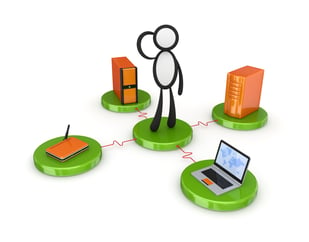1 min read
What do we mean by “Off-the-Shelf” Paperless Manufacturing?
For manufacturers searching for an Off-the-Shelf (OTS) software solution for the shop floor, but the truth is, you may be surprised what OTS for...
3 min read
Kristin McLane : August 16, 2016 at 11:13 AM

Every day, we work with manufacturers to make them more productive, and every day we hear stories about Enterprise Resource Planning (ERP) systems trying to replicate an MES. The ERP supplier promises they can replicate the functionality of an MES in their system, offering a single solution for the manufacturers software needs. Why buy multiple systems when you can get everything in a single purchase?
Trust me – this never turns out well. If you really want to improve and support manufacturing, you need an MES. Manufacturing is one of the most complex processes in business today, and a few features tacked onto an ERP aren’t going to help.
 An ERP is a transactional system. It can keep track of things – employees, vendors, customers, orders. An MES is based on workflow and processes, completely different than a transactional system. If you need to build something then send it to a customer, an ERP can track an order and the payment, but how does a system like that help you plan work, implement changes to the plan, and give you visibility into processes and workflow?
An ERP is a transactional system. It can keep track of things – employees, vendors, customers, orders. An MES is based on workflow and processes, completely different than a transactional system. If you need to build something then send it to a customer, an ERP can track an order and the payment, but how does a system like that help you plan work, implement changes to the plan, and give you visibility into processes and workflow?
On the shop floor, the ERP can easily keep track of a routing; it’s a thing. A routing is a list of work centers (things) and it can put those centers into an order. The ERP can list out what you will need to complete the work, and maybe even attach a document or spreadsheet. That simple listing works perfectly fine in the core mechanics hard-wired functionality of an ERP – leading many to believe there is an MES lurking inside the ERP. Mapping workflow isn’t a natural function within a transactional system. It can’t tell you where the order is, when it’ll get to the next step, or whether the order will finish on time. Worst of all, an ERP can’t help you when things go wrong.
 And things go wrong on the shop floor. Parts are missing. Machines break down. Operators make mistakes. The ERP fails you completely when it comes time to adjust workflow or automate processes to mitigate production disruption.
And things go wrong on the shop floor. Parts are missing. Machines break down. Operators make mistakes. The ERP fails you completely when it comes time to adjust workflow or automate processes to mitigate production disruption.
Sure, with custom-built tools, complex integrations and savvy coding, the ERP can be linked to shop floor machines. A unique screen can be added so operators log in, tracking when work starts. An ERP offers the illusion of workflow control, but it’s a shiny veneer on shallow functionality.
Most systems like this quickly fail under the pressure of supporting production, and the shop floor is forced to develop homegrown work-arounds. We’ve seen shop floor workers holding dirty plastic folders with the actual work instructions on a supposedly “paperless” shop floor supported by an ERP. It’s even worse with job shop software that uses email as the vehicle – nothing like putting the fate of production in the same tool an email spammer uses!
These systems simply weren’t designed to support workflow processes or the shop floor, and putting in a request for manufacturing functionality with an ERP implementer who doesn’t fully grasp the complexity or requirements of production is setting the whole team up for failure. Having an ERP company go out and buy an MES so they can market itself as an “all-in-one” solution is basically letting the ERP vendor charge more for a solution they don’t really support.
 Only a system built to handle workflow can optimally support manufacturing. The system has to connect the individual steps in a rhythm that can be redirected, rescheduled or rerun as things change, and it has to minimize complexity.
Only a system built to handle workflow can optimally support manufacturing. The system has to connect the individual steps in a rhythm that can be redirected, rescheduled or rerun as things change, and it has to minimize complexity.
If the software has separate modules for Work Instructions, Data Collections and Non-conformance Management (all critical components of a shop floor system), then there isn’t a natural connection between these processes, and it’s likely operations will need to develop “work-arounds” for the missing functionality. When you start connecting modules for processes with other modules for functionality, the complexity grows.
When a company licenses, sells, and implements modules independently, you know it’s either a modular MES (lots of problems and costs there) or an ERP trying to be an MES. The core system doesn’t have the functionality you need. The modular MES vendor will build it for you; the ERP vendor will try to cobble together some solution to sell you. Both will fail. Neither will give you the flexibility you need.
Manufacturing has different needs than the front office. You wouldn’t ask Human Resources to use a CNC machine, and the sales team isn’t going to use a dynamic scheduler, so why are you asking Operations to use the same tool as Procurement? If you consider manufacturing the core of your business, the profit driver, shouldn’t you give them a tool designed for their unique needs?
An ERP is great for the front office, but it will never offer the same benefit as an MES for production.
Want to learn more, or see how paperless manufacturing can help you? Call us and ask questions. We’re always willing to help.

1 min read
For manufacturers searching for an Off-the-Shelf (OTS) software solution for the shop floor, but the truth is, you may be surprised what OTS for...

Many manufacturing software companies claim they offer visibility and control, but gaps in their functionality can leave an unsuspecting customer...
3D Printing is going to have a dramatic affect on manufacturing, but we can learn from other industries how to succeed when change comes. By David...